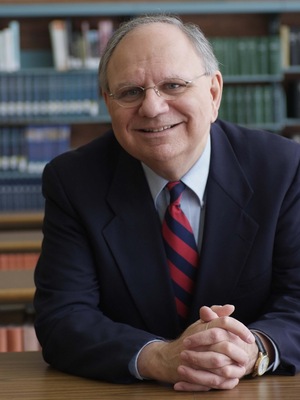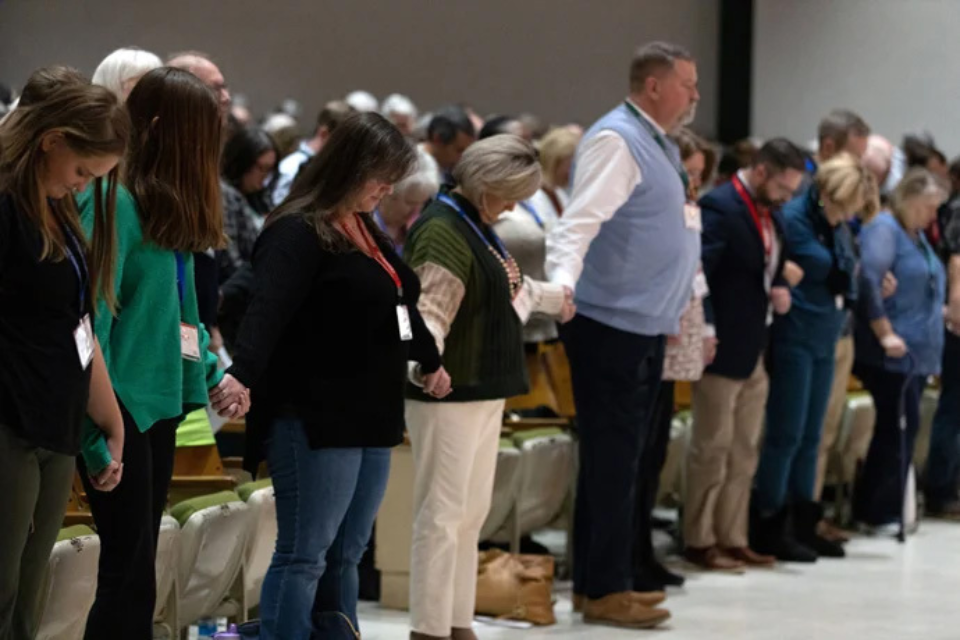A new Lewis Center for Church Leadership report finds that churches disaffiliating from The United Methodist Church are overwhelmingly in the South and Southwest. Compared with remaining United Methodist churches, they also are more likely to have a male pastor and a majority white membership.
SAM HODGES
UM News
Key points:
-
- The Lewis Center for Church Leadership has done a report that compares characteristics of disaffiliating churches with those remaining in The United Methodist Church.
- The large majority of exiting churches are in the South and Southwest.
- Disaffiliating churches are more likely than remaining churches to have a male pastor and to have a majority white membership.
- United Methodist Council of Bishops President Bishop Thomas J. Bickerton said the report has information that can help guide the denomination as it seeks to renew itself, including in areas where many churches have disaffiliated.
Churches disaffiliating from The United Methodist Church are overwhelmingly in the South and Southwest and compared to remaining United Methodist churches are more likely to have a male pastor and a majority white membership.
Those are among the findings of a new Lewis Center for Church Leadership report that looks at characteristics of departing and staying churches, based on 2019 statistics.
“Many persons have been asking about a systematic comparison since most United Methodist clergy and laity do not have a good picture of the profile of disaffiliating churches and, just as importantly, of those churches not disaffiliating,” the report says.
United Methodist Council of Bishops President Thomas J. Bickerton praised the Lewis Center and particularly the Rev. Lovett H. Weems Jr., senior consultant for the center and lead author of the report, for shedding light on both groups of churches.
Though there may be more curiosity about departing churches, there are lessons in the data for the remaining United Methodist Church, Bickerton believes.
“We have to work hard to refashion our message around ministry and mission, and this study helps to clarify that,” he said.
Longstanding divisions in The United Methodist Church over LGBTQ inclusion led the 2019 General Conference to approve a temporary measure for local churches in the U.S. to gain release from the denomination’s trust clause and leave with their property.
Departing churches must meet certain financial requirements and have at least a two-thirds vote of members in favor of disaffiliation, as well as a majority approval vote from its annual conference—a church regional body with voting members from multiple congregations.
The provision allowing this form of exit—Paragraph 2553 of the Book of Discipline—expires at the end of 2023.
A United Methodist News review found that annual conferences so far have approved the disaffiliations of 2,036 churches.

The Lewis Center report draws on data from the denomination’s General Council on Finance and Administration, as well as other church sources. The report looks at churches approved for disaffiliation through the end of 2022, and identified 1,967, amounting to 6.6% of total U.S. churches in 2019.
In looking for characteristics—such as church size and racial/ethnic makeup—the Lewis Center report draws on data from 2019, before the pandemic caused chaos in church life, and when the disaffiliating churches were still part of The United Methodist Church.
Weems acknowledged in an interview that the Lewis Center is providing an interim picture, given that there are nearly 30 special sessions of annual conferences scheduled through the end of the year, all to consider approving disaffiliations. As that number rises, the characteristics of the pool of exiting churches could change.
That the statistics come from 2019, as opposed to more recently, also is a limitation of the report.
“It’s not perfect. It does give a general idea,” Weems said.
The Lewis Center report notes “more similarities than differences” among staying and departing churches. It goes on to highlight areas where there is variance.
“Region and race are, I think, the two big things,” Weems said.
The report found that the South Central and Southeastern jurisdictions had 52% of United Methodist churches in the U.S. in 2019 and 84% of church disaffiliations through the end of 2022. Those two jurisdictions had 63% of U.S. membership in 2019 and 84% of the membership of disaffiliating churches.
Within those jurisdictions, certain conferences have seen dramatic change.
The North Carolina Conference, in the Southeastern Jurisdiction, met Nov. 19, 2022, and approved the departure of 249 churches, about 32% of the conference total. The Texas Conference, in the South Central Jurisdiction, met on Dec. 4, 2022, and approved 294 churches for departure. That accounts for almost half of the conference’s churches.
“The Texas Conference has been reshaped vastly within a period of months,” said the Rev. Ted Campbell, a Perkins School of Theology professor and Texas Conference elder. “Now we face the challenge of moving forward as Methodists, and as Christ’s people, but in a very new, unfamiliar environment.”
The Lewis Center report shows that 89.6% of United Methodist congregations in the U.S., as of 2019, were majority white. Of the disaffiliating churches, 97.3% fit that description.
African American churches constituted 7.2% of United Methodist churches in the U.S. in 2019, but only 2% of exiting churches. Other racial/ethnic groups also had a low percentage of disaffiliating churches.
Bickerton said he was grateful for the faithfulness of Black United Methodists, given discrimination they and their forebears have faced, including within church life.

“When there was every excuse for our Black members to leave, they stayed, and they are still here,” he said. “It deserves to be noted—their resilience, their faithfulness and their belief in our denomination, even in the midst of their oppressions.”
The Rev. Antoine “Tony” Love and Deborah Bass, chair and vice chair of the caucus Black Methodists for Church Renewal, said African American churches are not of one mind about issues that have divided the denomination, but have a longstanding, vital commitment to pushing The United Methodist Church forward on race relations.
“We empower a privileged church not to do its homework if we walk away,” Love said.
Bass added that many African American congregations of The United Methodist Church are mainly populated by Baby Boomers like herself and “super seniors” who remember the 1968 merger that created The United Methodist Church. She and others want to see the fulfillment of the promises of racial justice that went with the merger.
“To leave my denomination at this point and start something new, that’s extremely difficult to work your head through,” Bass said.
The Lewis Center report found that women led 29% of United Methodist churches in the U.S. in 2019. Of the disaffiliating churches, women led 17%.
The Rev. Mindy Faith Zwirn, a United Methodist pastor in northeast Texas, said she’s not sure any strong conclusions can be drawn from a gap of that size.
But Zwirn noted that in Texas some disaffiliation proponents alleged that The United Methodist Church doesn’t rigorously follow Scripture. She said generations of women seeking to answer a ministry call were thwarted by those saying the Bible didn’t allow it.
To hear such rhetoric in the disaffiliation debate “probably contributed to a lower number of women pastors leading their churches to leave,” said Zwirn, who with her church, Chapelwood United Methodist of Nash, Texas, is strongly committed to remaining United Methodist.
The Lewis Center report found that disaffiliating churches are not all that different from remaining churches in attendance.
Both groups have a large majority of churches with 50 or fewer people in worship on an average. Three percent of disaffiliating churches average 500 or more, compared to 2% of staying churches.
Weems said he has heard United Methodists incorrectly dismiss the disaffiliation movement as only occurring among very small churches. Indeed, some conferences have seen their largest churches vote to disaffiliate.
But across mainline Protestantism, average church attendance and membership remain small, and have declined over many years, Weems said.
The report does not track whether disaffiliating churches are headed to the new, traditionalist Global Methodist Church or some other denomination—or are remaining independent.
But Bickerton said the report offers vital information, including on where The United Methodist Church needs to reestablish itself.
He’s sure that can happen.
“In places where there are large numbers of disaffiliations, there are plenty of people who long for the kind of theology and the approach to ministry that is found in The United Methodist Church.”
Last Updated on March 14, 2023

